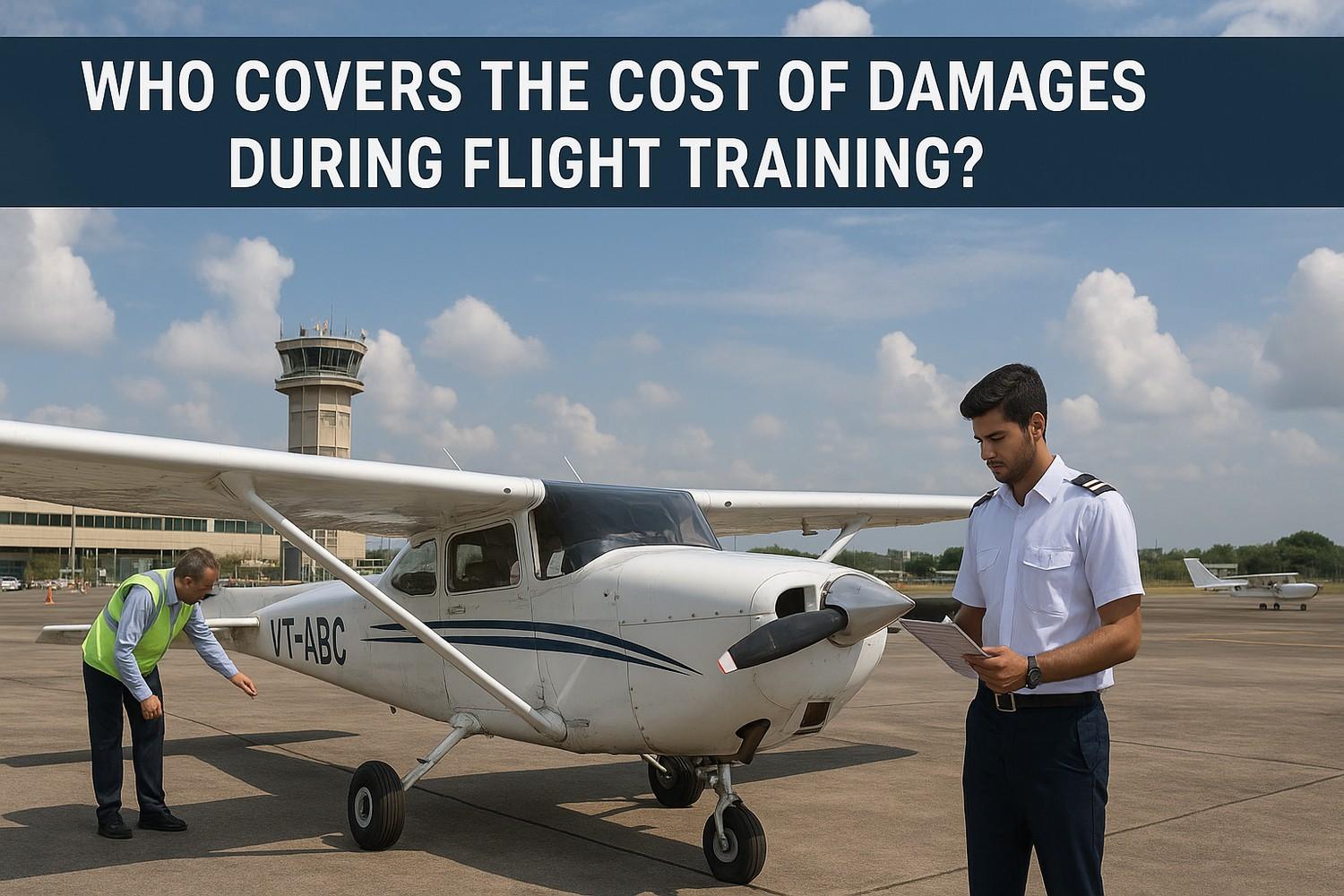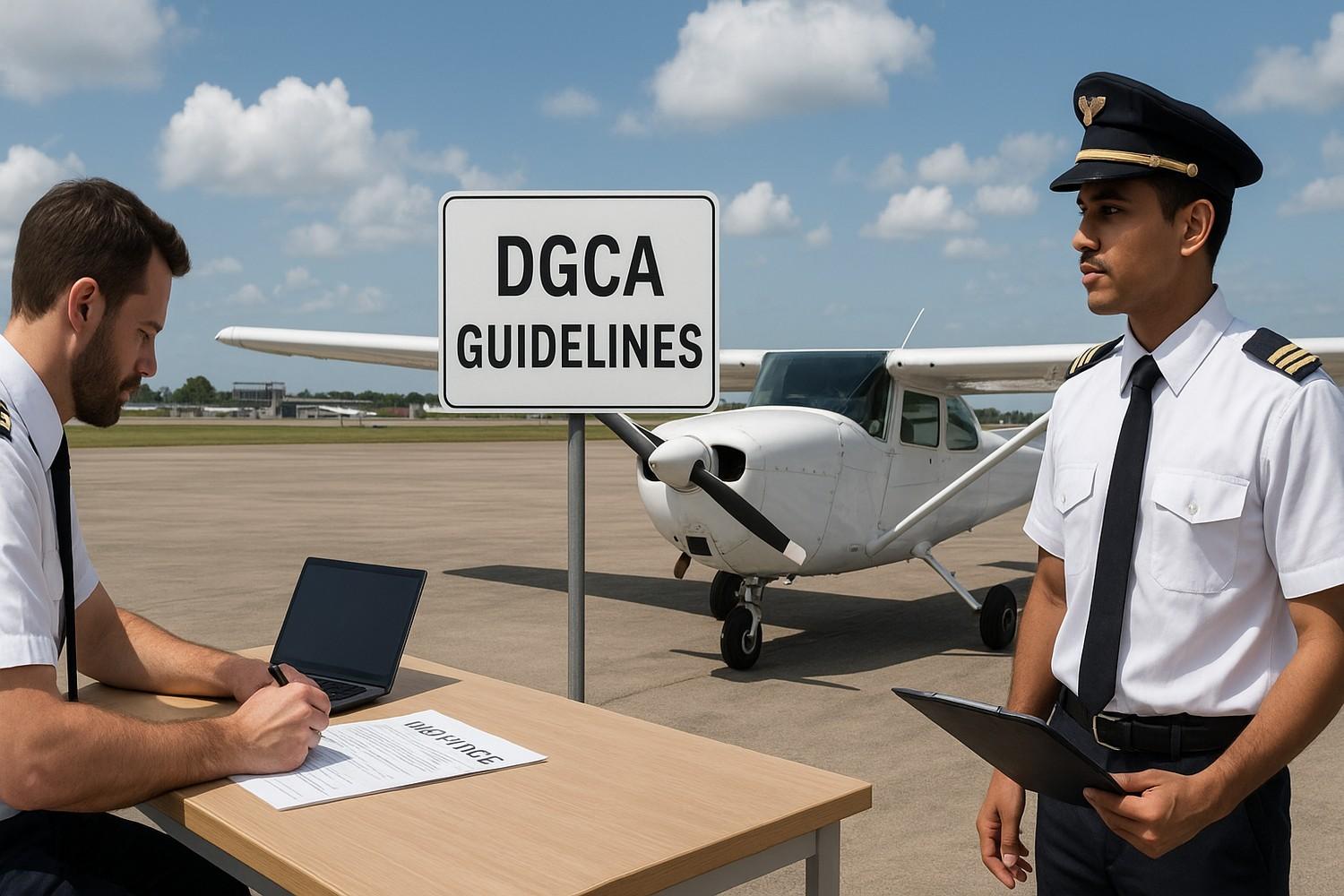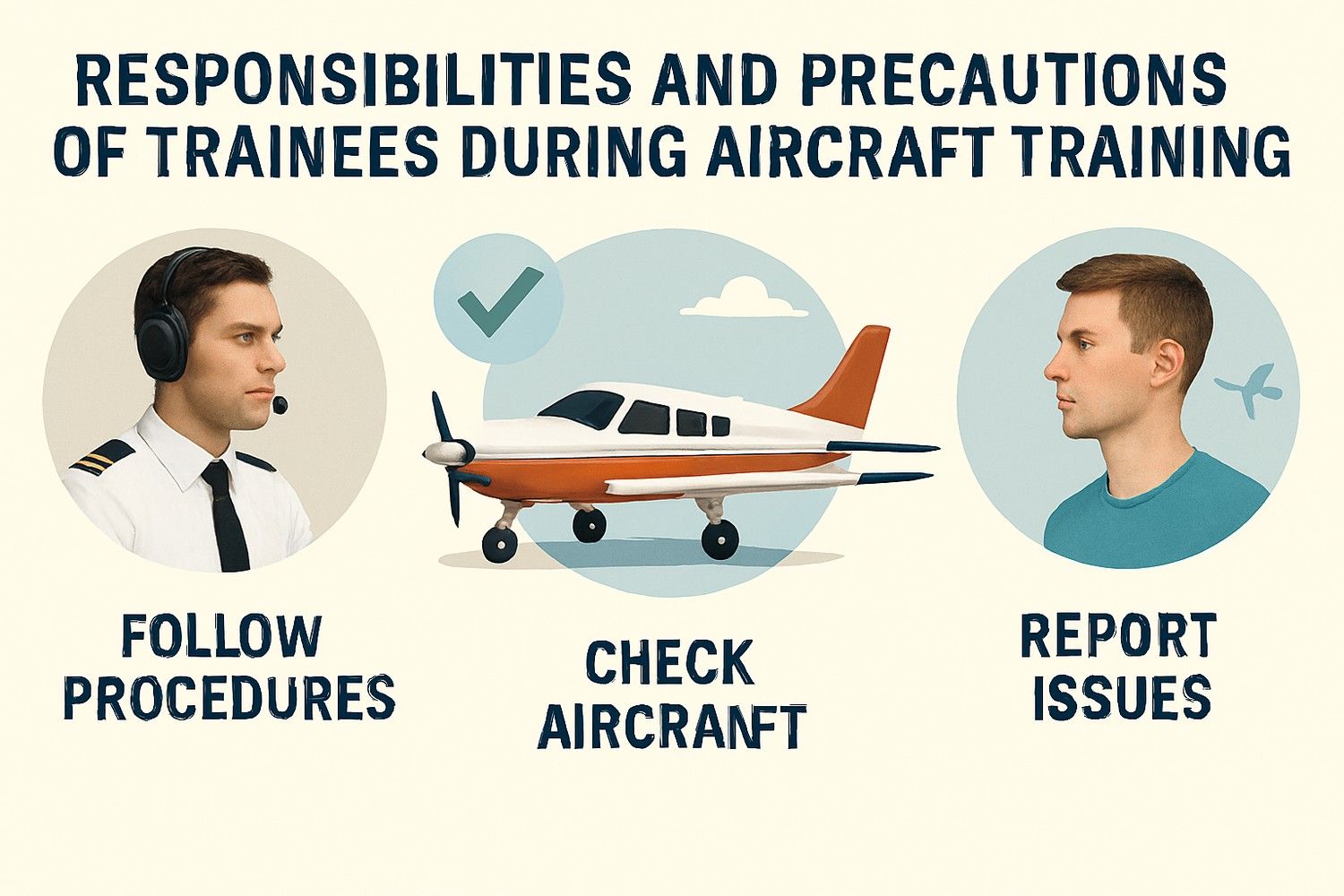From Office to Cockpit: How Indian Working Professionals Are Becoming Commercial Pilots?
The Indian aviation industry continues to grow from strength to strength. Traditionally, many young people dreamed of becoming pilots

The DGCA supervises flight training in India. There are more than 30 recognized Flying Training Organizations operating for pilot training in India in 2024-25, which have a total of about 220–250 trainer aircraft. Trainee pilots have to fly about 200 to 250 hours, including both solo and dual flights. During this time, sometimes plane accidents or technical problems may occur, causing damage to the aircraft. In such cases, many complications arise concerning cost responsibility.
This blog explores who will be responsible for covering the financial costs of aircraft damage and repair during pilot training. Here, you will get to know what the scenario is like in India and what all the trainee pilots have to bear in mind before enrolling with a pilot training institute.

Traditionally, "hull insurance" was mandatory for all training aircraft in India, which covered physical damage to the aircraft. Insurance generally covers factors such as damage caused by pilot errors, bad weather, bird collisions or mechanical failure. But recently, insurance premiums have seen steep increases—from 1–3% of the aircraft value to 5–15%. This has led several insurance companies to stop insuring older aircraft or impose stricter regulations regarding the same. In 2025, the DGCA proposed that hull insurance would no longer be mandatory, giving institutions the option of self-funded repair.

If any damage occurs to the aircraft during flight training, the liability depends on the circumstances. If a trainee pilot is on a solo flight and damages the aircraft, in most cases, he/she is personally liable to pay for the damage. Many FTOs stipulate in their rental agreements that for damage caused during solo flights, the student will have to bear the insurance deductible, ‘loss of use’ fees, and sometimes even the full repair cost.
Alternatively, if an instructor supervises the flight, the training institute usually pays the claim through insurance or pays for the repairs from internal funds. However, if the training institute does not have insurance, it can charge the student for the damage.

Insurance companies often make it clear in their terms and conditions that a student pilot can be held responsible for damages caused while in the role of "PIC" (Pilot in Command). This is why many FTOs require their student pilots to pay an advance security deposit or reimburse the insurance deductible in case of damage. In addition, if the aircraft is under repair for several days, the institutes also charge the student for the per-day aviation time, called 'loss of use'. This amount can be ₹5,000 to ₹15,000 per day.

Insurance has now become an intricate task for FTOs. As a result of the high premiums and strict conditions imposed by insurance companies, many institutions have adopted an alternative model, managing accidental repair expenses through a "self-insurance reserve fund". But this model carries a high risk; if a major loss occurs, the institution may face a huge financial crisis. This is why some institutions add such clauses in student contracts to reduce the risk so that they can recover the expenses from the student.

Trainee pilots should read the contract made with the institution very carefully before enrolling for flight training. They should ask very clear questions before making any agreement with a training institute. Some of the most important questions are as follows:
If the student enters into the contract after understanding these things, he/she can save themselves from any accidental expenses in the future.

The DGCA has carried out several inspections on FTOs in recent years. A special audit revealed that many FTOs were not following safety procedures properly. In some cases, recordings were found to be faulty, instructors' qualifications were questionable, and equipment was not checked on time. Due to these reasons, the DGCA has also temporarily suspended the activities of many training institutes.
This makes it clear that ensuring the safety of trainees and training quality is not just an obligation but a necessary rule for the institutes. So, the institutes must abide by all the rules laid down by the DGCA to ensure that all the regulatory and safety aspects are taken care of. Trainer qualifications should be thoroughly checked before onboarding, as the absence of relevant qualifications and experience can be both damaging and, in some cases, dangerously damaging to both the aircraft and the trainees' lives.

If the aircraft is damaged during flight training in India, then its responsibility depends on the situation. If the student is flying solo, then mostly, the financial responsibility for the damage is his/ hers. In contrast, if the accident occurs under the instructor's supervision, the training institute repairs it through insurance or its own funds. The huge increase in insurance premiums in recent years and the new proposals of the DGCA have made the situation more challenging for both the training institutes and the students.
Therefore, student pilots must be vigilant when reading contracts, training institutions must maintain transparency, and regulatory bodies must ensure strict adherence to safety regulations. Ultimately, the goal of flight training is not only to produce skilled pilots but also to develop a safe and responsible aviation culture.

If you want to become a pilot and are looking for a flight training institute for the same, then Flapone Aviation is your destination. Here, you will receive the best-in-class aviation training. You have to focus on honing your skills and expanding the horizon of your knowledge as a pilot. The cases of aircraft damage are few and far between and with experienced instructors, it is reduced even further. So, don't overthink it and join us without any apprehension whatsoever and fly high to make your dreams a reality.
Connect with our aviation mentors to find the right path toward becoming a licensed aircraft pilot.